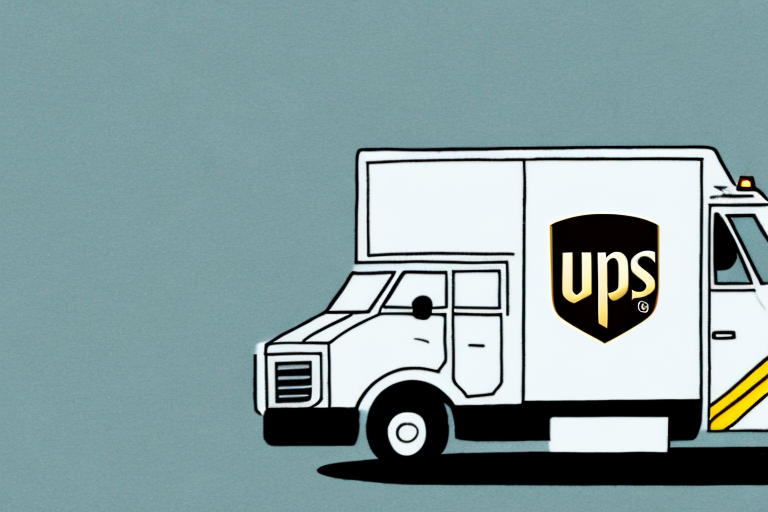How to Get the Best UPS Shipping Rates
If you're looking to save money on shipping costs, UPS offers a variety of ways to help you get the best rates. From understanding their rate structure to negotiating for volume discounts, there are many strategies you can employ to lower your shipping expenses. In this article, we'll explore the factors that affect UPS shipping rates and how to leverage their tools and resources to your advantage, ensuring you maximize savings and efficiency.
Understanding the UPS Shipping Rate Structure
The rates you pay for UPS shipping depend on several factors, including the weight and dimensions of your package, the destination, the speed of delivery, and the service level you choose. UPS offers different rates for various types of shipments such as ground, air, and international.
Additionally, UPS provides discounts for customers who ship frequently or in large volumes. These discounts can be negotiated based on your shipping history and projected future shipping needs. UPS also offers a suite of tools and resources to help you calculate shipping costs and select the most cost-effective shipping options. It's important to regularly review your shipping costs and explore new ways to save money, as UPS rates can change due to market conditions and other factors. By staying informed about UPS's rate structure and leveraging available discounts and resources, you can ensure you're getting the best possible value for your shipping needs.
Factors that Affect UPS Shipping Rates
One key factor that affects UPS shipping rates is the size and weight of the package. Heavier and larger packages incur higher shipping costs. Additionally, the delivery distance plays a significant role; the farther your package needs to travel, the more you'll pay. Shipping speed is another crucial factor, as expedited delivery options come with premium rates. Moreover, UPS offers several value-added services like insurance and signature requirements, which can increase overall costs.
The type of items being shipped also impacts UPS shipping rates. Certain items may require special handling or packaging, potentially increasing the shipping cost. For example, fragile or hazardous items need additional packaging materials or specific handling during transit, adding to the total cost. Therefore, it's essential to consider the nature of the item being shipped when calculating shipping costs with UPS.
How to Calculate Your Shipping Costs with UPS Rate Tools
To determine the cost of shipping with UPS, utilize their online shipping calculator. This tool allows you to input the weight, dimensions, and destination of your package to estimate your shipping costs accurately. If you have a UPS account, you can use their shipping software for more precise rates and to manage your shipments efficiently.
UPS provides various shipping options, including ground, air, and international shipping. Depending on your specific needs, you can choose the most suitable option for your package. Additionally, UPS offers extra services such as package tracking, insurance, and delivery confirmation for an additional fee. It's crucial to factor in these options and services when calculating your shipping costs to ensure you select the most cost-effective and reliable solutions for your shipments.
Tips to Negotiate Better UPS Shipping Rates for Your Business
If your business regularly ships large volumes of packages with UPS, you may be eligible to negotiate better rates based on your shipping volume. Building a strong relationship with your UPS account representative is essential; ensure they understand your shipping needs and budget constraints. Additionally, compare rates with other shipping carriers to use competitive pricing as leverage in your negotiations with UPS.
Furthermore, utilize UPS's online tools and resources to optimize your shipping process and reduce costs. For instance, use their shipping calculator to estimate costs and select the most cost-efficient shipping options. Take advantage of free packaging supplies and utilize their online platform to schedule pickups and track shipments in real-time. By leveraging these tools, you can not only negotiate better rates but also streamline your shipping operations, saving both time and money in the long run.
How to Leverage UPS Volume Discounts for Lower Shipping Rates
UPS offers volume-based discounts for businesses that ship large quantities of packages. As your shipment volume increases each month or year, you may qualify for these discounts. It's important to discuss these options with your UPS account representative to understand the criteria and best ways to qualify.
One strategy to increase your shipment volume is to consolidate multiple orders into a single shipment. This not only reduces shipping costs but also minimizes your carbon footprint by decreasing the number of delivery trips needed. Additionally, use UPS's online tools to schedule pickups and track shipments in real-time, helping you to manage your shipping process more effectively and maximize your savings.
Another approach is to negotiate a contract with UPS that includes customized pricing based on your specific shipping needs, such as package weight, destination, and delivery speed. By working closely with your UPS account representative to create a tailored contract, you can potentially achieve significant savings on your shipping expenses and enhance your overall bottom line.
Exploring UPS Flat Rate Options for Smaller Packages
To save on shipping costs, consider using UPS's flat-rate options for smaller packages. These rates are determined by the size of the package rather than its weight, offering a cost-effective solution for small, dense items that might otherwise be expensive to ship.
UPS offers a variety of flat-rate box sizes, ranging from small to large. This flexibility allows you to select the box size that best fits your item without worrying about the weight. Additionally, UPS provides free packaging materials, enabling you to pack and ship your items without incurring additional costs. If you're looking for a hassle-free and affordable shipping option for smaller packages, UPS's flat-rate shipping could be the ideal solution for your needs.
How to Use UPS Zones and Delivery Timeframes to Save on Shipping Costs
UPS employs a zone-based system to determine shipping costs, with zones defined by the distance from your origin point. By understanding the zones and their associated rates, you can make informed decisions about where to ship and how to package your items. Opting for longer delivery timeframes can also lead to lower shipping costs.
Additionally, leveraging UPS's flat-rate boxes can be beneficial. These boxes allow you to ship items up to a certain weight and size for a fixed rate, regardless of the destination zone. This is particularly useful for shipping heavier items or items going to zones that would typically incur higher shipping costs.
It's also essential to consider the dimensions and weight of your packages when shipping with UPS. Oversized or overweight packages can result in additional fees, so it's important to package your items efficiently and accurately measure and weigh them before shipping. By doing so, you can avoid unexpected fees and optimize your shipping costs.
Comparing UPS Shipping Rates with Other Carriers like FedEx and USPS
To secure the best rates, it's crucial to compare UPS rates with those of other shipping carriers such as FedEx and USPS. Utilize online shipping calculators or contact each carrier directly for quotes. Comparing rates allows you to make informed decisions about which carrier offers the best value for your shipments.
When comparing shipping rates, consider not only the cost but also the delivery time and reliability of each carrier. While one carrier may offer lower rates, they might not have a strong track record for on-time deliveries or package handling. Reviewing customer feedback and industry ratings can provide insight into each carrier's performance.
Another important factor is the level of customer service each carrier provides. Some carriers offer enhanced customer support, such as 24/7 assistance or advanced package tracking features. This can be particularly important if you regularly ship valuable or time-sensitive items.
How to Choose the Right UPS Service Level for Your Shipments
UPS offers a range of service levels to fit your shipping needs, from ground shipping to next-day air. Selecting the appropriate service level can help you save money without compromising on speed or reliability. When choosing a service level, consider factors such as delivery time, package size and weight, and destination.
Additionally, assess the value of the items you are shipping. For high-value items, you might opt for a service level that includes extra insurance or tracking options. If you have strict delivery deadlines, selecting a faster service level ensures your package arrives on time. By carefully evaluating these factors, you can choose the right UPS service level tailored to your specific shipping requirements.
Tips for Optimizing Your Packaging and Labeling to Avoid Additional Fees
To prevent incurring additional fees and surcharges, it’s vital to properly package and label your items. Use sturdy boxes and high-quality packaging materials to protect your items during transit. Ensure your labels are clear and accurate, and include any necessary value-added services like insurance. Adhere to any special packaging requirements for hazardous materials or international shipments to avoid extra costs.
Pay attention to the size and weight of your package. Oversized or overweight packages often attract extra fees, so aim to keep your packages within the carrier’s size and weight limits. You can also consider utilizing flat-rate shipping options or consolidating multiple items into one package to reduce shipping costs. By optimizing your packaging and labeling practices, you can avoid unexpected fees and ensure your items arrive safely and on schedule.
How to Track Your Packages and Manage Your Shipping Costs with UPS Technology Solutions
UPS provides a variety of technology solutions to help you manage your shipments and track your packages in real time. Their online shipping platform and mobile app allow you to monitor your shipments and optimize your shipping strategy for maximum savings.
In addition to real-time tracking and cost management, UPS's technology solutions offer features such as delivery alerts, address validation, and access to customs documentation. These tools streamline your shipping process, ensuring your packages arrive at their destinations on time and in good condition. With UPS technology solutions, you can manage your shipments efficiently and effectively, providing peace of mind and enhancing your overall shipping experience.
Best Practices for Managing Your Overall Shipping Strategy with UPS
To maximize the benefits of your shipping relationship with UPS, it’s essential to manage your overall shipping strategy effectively. Take advantage of UPS's comprehensive resources and tools, build strong relationships with your account representatives, and continuously evaluate your shipping needs to ensure you are securing the best rates possible.
- Leverage UPS Tools and Resources: Utilize UPS’s online tools, shipping calculators, and technology solutions to streamline your shipping operations.
- Build Relationships: Maintain excellent communication with your UPS account representatives to negotiate better rates and gain access to exclusive discounts.
- Regularly Evaluate Shipping Needs: Assess your shipping patterns and adjust your strategies based on current business needs and market conditions.
- Stay Informed: Keep up-to-date with changes in UPS rates, services, and industry trends to make informed decisions about your shipping strategies.
By implementing these best practices, you can optimize your shipping strategy with UPS, ensuring efficiency, cost-effectiveness, and reliability for your business needs.




















